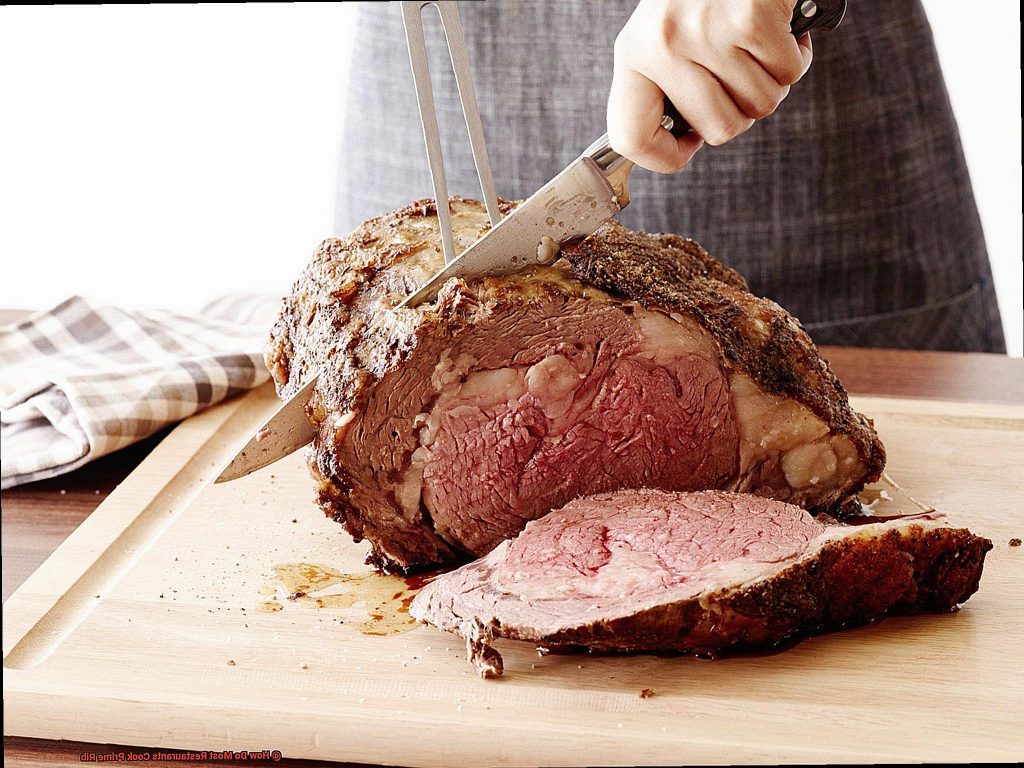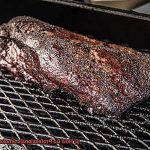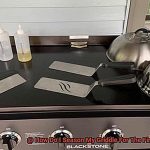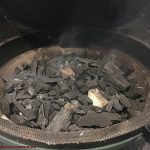Are you a meat lover who can’t resist the thought of a perfectly cooked prime rib? We feel you. This mouth-watering cut of beef is a staple in high-end restaurants worldwide, but have you ever wondered how they cook it to perfection? Well, wonder no more. In this blog post, we’ll take you on a journey through the world of prime rib and reveal the secrets behind how most restaurants cook this succulent dish.
First things first, let’s talk about what prime rib is. It’s a cut of beef that comes from the primal rib section of a cow. With its marbled texture, rich flavor, and tender juiciness, it’s no surprise that it’s a favorite among meat connoisseurs.
But how do most restaurants achieve that melt-in-your-mouth texture? The answer lies in their cooking process. They start by dry-aging the meat to break down the connective tissues and enhance its flavor. Then comes the slow cooking process at low temperature to ensure even distribution of flavors throughout the meat. Finally, they finish off with a high-heat searing to create that flavorful crust that seals in all those delicious juices.
So there you have it – the secret behind how most restaurants cook their prime rib. But don’t worry if you’re not dining out anytime soon because we’ve got your back. Stay tuned for our next blog post where we’ll share some tips and techniques for cooking prime rib at home like a pro.
Contents
What is Prime Rib?
This juicy and tender meat comes from the rib section of the cow, typically a large cut of meat that includes several bones, giving it its distinctive shape.
While the term “prime” refers to the highest quality of beef, not all prime rib is actually graded as prime. The grading system for beef takes into account factors such as marbling, color, and texture, with higher grades indicating better quality. However, even lower grades of prime rib can still be delicious when cooked properly.
When it comes to cooking prime rib, there are many different methods and techniques that restaurants may use. Slow-roasting the meat at a low temperature for several hours allows the meat to cook evenly and retain its moisture and flavor. Some chefs may also sear the meat quickly at high heat before finishing it in the oven to achieve a crispy exterior and juicy interior.
Seasoning is also an essential aspect of cooking prime rib. Many chefs rub the meat with a mixture of herbs and spices before cooking it. Popular seasonings include garlic, rosemary, thyme, salt, and pepper. Some chefs also like to baste the meat with melted butter or beef broth during cooking to add extra flavor and moisture.
One technique that some restaurants use to finish off their prime rib is called “reverse searing.” This involves searing the outside of the meat at a high temperature for a short period after it has been slow-roasted. This gives the prime rib a nice crust on the outside while still being juicy and tender on the inside.
It’s crucial to let the prime rib rest for a few minutes before serving. This allows the juices to redistribute throughout the meat, resulting in a moist and flavorful slice.
Seasoning the Prime Rib
The prime rib is a cut of beef that is rich in flavor and has a melt-in-your-mouth texture that’s hard to resist. However, to make it a perfect dish, seasoning is key. So, how do you go about seasoning the prime rib?
Firstly, bring the prime rib to room temperature before seasoning. This allows for more even cooking and helps the meat retain its natural juices. After this, it’s time to start seasoning.
Most restaurants keep it simple with their prime rib seasonings. Salt, pepper, and garlic are the most common choices. Some chefs also like to add herbs like rosemary or thyme, but these are used sparingly to avoid overpowering the natural flavor of the meat.
To season your prime rib, generously sprinkle salt and pepper on all sides of the meat. If you’re feeling adventurous, you can also create a dry rub by mixing together your favorite spices and herbs and rubbing them onto the meat before cooking.
It’s crucial to let your seasoned prime rib sit for at least an hour before cooking to allow the flavors to penetrate the meat and enhance its overall taste.
When it comes to cooking your seasoned prime rib, there are various methods to choose from. Slow-roasting is the most popular method as it ensures that the meat retains its moisture and flavor. Some chefs may also baste their prime rib with melted butter or beef broth during cooking to enhance its savoriness.
For those who prefer a crispy exterior, the “reverse searing” technique might be worth considering. This involves searing the outside of the meat at a high temperature for a short period after it has been slow-roasted.
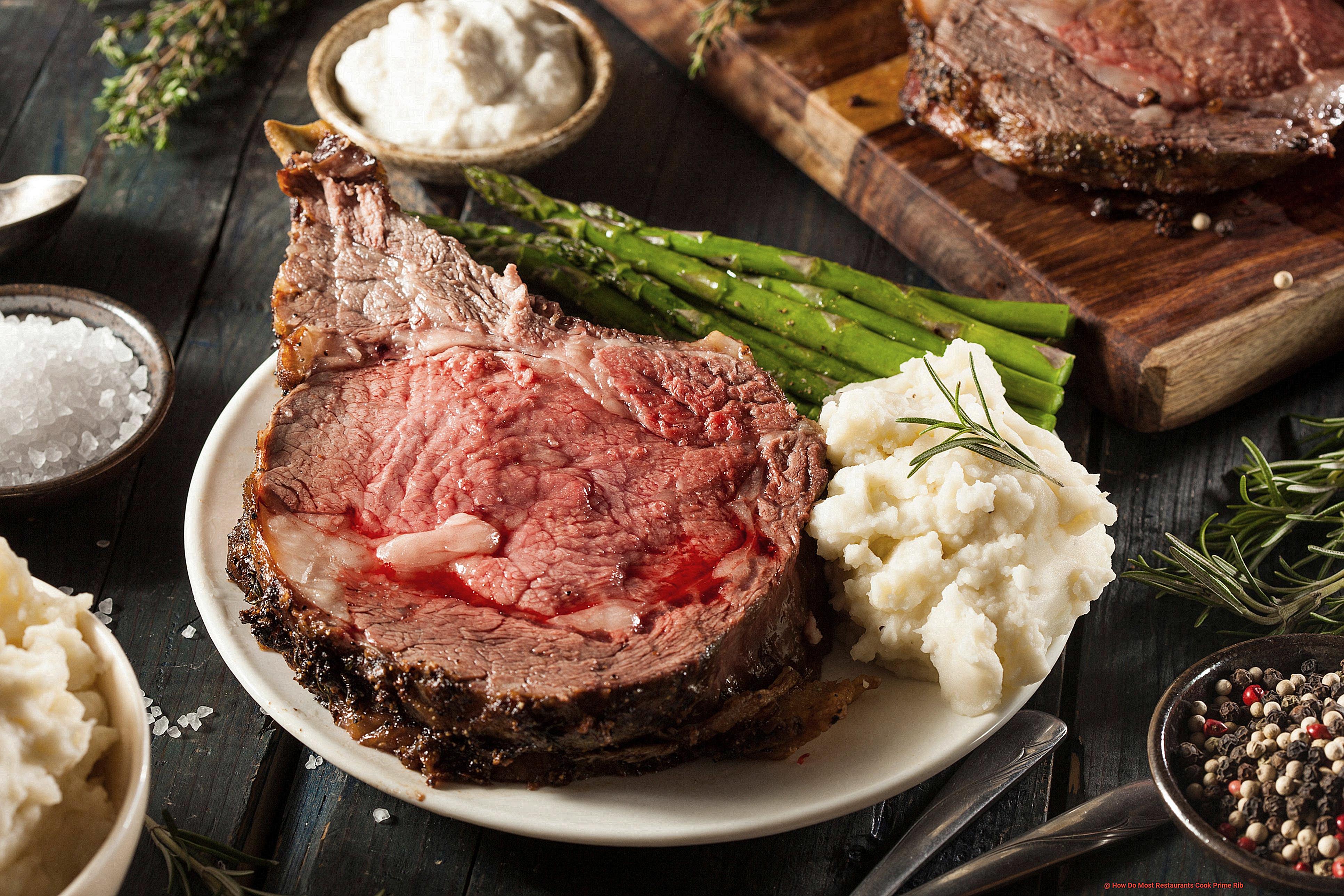
No matter which cooking method you choose, one thing is certain: letting your prime rib rest for a few minutes before serving is crucial for optimal juiciness. This allows the juices to redistribute throughout the meat and ensures that each bite is as flavorful as the last.
Slow Roasting the Prime Rib
Slow-roasting a prime rib is not just another cooking method, it’s an art that requires patience and precision. This cooking technique has become increasingly popular among restaurants as it results in a tender and juicy meat packed with intense flavor.
To begin the slow-roasting process, start by seasoning your prime rib with salt, pepper, and a combination of herbs and spices of your choice. For an extra burst of flavor, make a rub using garlic, rosemary, and thyme.
Place your seasoned prime rib in a roasting pan and preheat your oven to a low temperature of around 250-300°F. Slow-roasting is all about timing, so allow your prime rib to cook for 2-4 hours depending on its size. To ensure even cooking, use a meat thermometer to monitor the internal temperature of the meat. Aim for around 130-135°F for perfect medium-rare doneness.
Once you’ve achieved the ideal temperature, remove the prime rib from the oven and let it rest for 10-15 minutes before carving. This resting period allows the juices to redistribute throughout the meat resulting in a mouthwatering texture that melts in your mouth with every bite.
Reverse Searing the Prime Rib
Look no further than the reverse searing method. This popular technique involves slow cooking the meat at a low temperature before searing it at a high temperature towards the end of the cooking process.
To start, season your prime rib with salt, pepper, and any desired herbs and spices. Then, place it in the oven at a low temperature (around 200-250 degrees Fahrenheit) until it reaches an internal temperature of about 115-120 degrees Fahrenheit. This slow cooking process can take several hours, but the result is perfectly cooked meat with an even doneness throughout.
Once your meat has reached the desired internal temperature, remove it from the oven and let it rest for 15-20 minutes. During this time, the juices will redistribute throughout the meat, ensuring a juicy and tender bite.
Now it’s time to bring on the heat and sear that prime rib to perfection. Heat up a skillet or grill to a high temperature and sear each side of your prime rib for just a few minutes. The searing process creates a delicious crust on the outside of the meat while keeping the inside tender and juicy.
But wait, there’s more. Here are some additional tips for perfecting your reverse seared prime rib:
- Use a meat thermometer to ensure accuracy in reaching desired internal temperatures.
- Let your prime rib come to room temperature before cooking to ensure even cooking throughout.
- For added flavor, use wood chips or charcoal when searing on a grill.
- Experiment with different herbs and spices to find your perfect seasoning blend.
Letting the Prime Rib Rest
The reverse searing method has allowed you to achieve the perfect internal temperature, but don’t forget the crucial final step – letting the prime rib rest. This step is just as important as cooking and can make all the difference between a good meal and an unforgettable one.
Resting your prime rib allows its juices to redistribute throughout the meat, resulting in a juicy and tender piece of beef. By not allowing your prime rib to rest, you risk losing those precious juices, leaving you with a dry and tough piece of meat. Most restaurants follow this practice to ensure their prime rib is of the highest quality.
How long you should let your prime rib rest depends on its size. As a general rule, smaller cuts should rest for at least 10-15 minutes, while larger cuts should rest for at least 20-30 minutes. A good rule of thumb is to let it rest for about 5 minutes per pound. During this time, the meat will continue to cook as the internal temperature rises.
While resting your prime rib, it’s crucial to keep it warm so that it stays hot when it’s served. You can do this by loosely covering it with foil or placing it in a warm oven with a low temperature setting. This will maintain its internal temperature and ensure that it stays juicy and flavorful.
Tips for Making Restaurant-Quality Prime Rib at Home
And while it may seem like a daunting task to replicate the same restaurant-quality flavor and tenderness at home, it’s actually easier than you might think. Here are some tips and techniques to help you achieve the perfect prime rib every time.
Tip #1: Choose the Right Cut
The first step to making restaurant-quality prime rib at home is selecting the right cut of meat. Look for a prime or choice grade rib roast with good marbling. This will ensure that your prime rib has maximum flavor and tenderness. Also, let the meat come to room temperature before cooking to guarantee even cooking throughout the roast.
Tip #2: Season Generously
Seasoning is key when it comes to making great prime rib. Most restaurants use a blend of salt, pepper, garlic powder, and herbs like rosemary and thyme to enhance the flavor of their prime rib. You can also experiment with different spice blends to find your perfect combination.
Tip #3: Slow Roasting
Slow roasting is an essential technique used in restaurant kitchens for making prime rib. This involves cooking the meat at a low temperature (around 325°F) until it reaches your desired internal temperature (usually around 130°F for medium-rare). This slow cooking method ensures that the meat is cooked evenly throughout and retains its juices, resulting in a tender and flavorful prime rib.
Tip #4: High-Heat Searing
To give your prime rib a nice crust on the outside while still being juicy and tender on the inside, consider using a technique called “reverse searing.” This involves searing the outside of the meat at a high temperature (around 500°F) for a short period after it has been slow-roasted.
Tip #5: Rest Before Serving
After removing the prime rib from the oven or grill, let it rest for at least 10-15 minutes before carving. This allows the juices to redistribute throughout the meat, resulting in a juicier and more flavorful final product. Plus, it gives you time to finish up any last-minute side dishes or prepare the au jus.
Tip #6: Serve with Au Jus
No prime rib is complete without a delicious dipping sauce. The au jus is a flavorful sauce made from the pan drippings, beef stock, and aromatics like garlic and onions. It adds an extra boost of flavor to your prime rib and is sure to impress your guests.
Tip #7: Get Creative with Sides
While mashed potatoes and roasted vegetables are classic sides for prime rib, don’t be afraid to mix it up a bit. Consider serving your prime rib with a horseradish cream sauce or a red wine reduction for a restaurant-quality presentation.
The Benefits of Cooking Prime Rib in a Restaurant Setting
Let us tell you, there are many benefits to experiencing this delectable dish in a restaurant setting. From access to high-quality cuts of meat to the expertise of professional chefs, restaurants offer an unparalleled dining experience that is hard to replicate at home.
One of the most significant advantages of dining out for prime rib is access to the finest cuts of meat available. Restaurants know how to source prime rib from reputable suppliers and can guarantee that you’re getting the best quality meat possible. This means you can sit back, relax, and indulge in the mouth-watering flavors without worrying about sourcing high-quality ingredients.
Another benefit of dining out is having professional chefs who are experts in cooking prime rib. These culinary masters have years of experience and know precisely how to prepare and cook prime rib to perfection. They understand the ideal temperature, timing, and seasoning needed to create an exceptional plate of prime rib. So, when you dine out for prime rib, you’re not only enjoying a delicious meal but also a culinary masterpiece crafted by skilled professionals.
Consistency in quality and preparation is another advantage of dining out for prime rib. Restaurants have a process in place to ensure that each prime rib is cooked to the same high standard every time. This means that whether it’s your first or tenth time ordering prime rib at your favorite restaurant, you can expect a consistently delicious dining experience every time.
Finally, dining out for prime rib allows for customization and personalization options that may not be available when cooking at home. Restaurants can offer a variety of cooking methods, seasoning options, and side dishes to complement your prime rib. You can choose how you want your prime rib cooked and what sides you want to accompany it. This level of customization is not always possible when cooking prime rib at home.
Common Mistakes to Avoid When Cooking Prime Rib
Well, then let’s talk about some of the common mistakes that can ruin this delicious cut of beef.
Firstly, never make the mistake of cooking your prime rib straight from the fridge. This can lead to uneven cooking and tough meat. Allow the meat to come to room temperature for at least an hour before cooking. Trust us, your taste buds will thank you.
Seasoning is another area where people tend to go overboard. Prime rib is already a flavorful cut of beef, so keep the seasoning simple by using salt, pepper, and garlic. Too much seasoning can overpower the natural taste of the beef and leave you with a subpar dining experience.
Now, let’s talk about cooking times. Prime rib is a delicate cut that requires precise cooking to achieve the perfect level of doneness. Overcooking can result in dry and tough meat, while undercooking can be unsafe to eat. Invest in a meat thermometer and ensure that the internal temperature reaches 130-135°F for medium-rare or 140-145°F for medium.
Finally, don’t forget to let your meat rest before slicing. Resting allows the juices to redistribute throughout the meat, resulting in a juicy and tender finished product. Resist the urge to dive right in and wait at least 15 minutes before slicing.
Conclusion
To sum it up, prime rib is a delectable cut of beef that meat enthusiasts worldwide adore. Top-notch restaurants have honed the art of cooking prime rib to perfection, resulting in a texture that melts in your mouth and a flavor that tantalizes your taste buds. The key lies in their cooking process, which involves dry-aging the meat, slow-cooking it at low temperatures, and searing it at high heat to produce that delectable crust.
Seasoning plays an essential role in cooking prime rib, with most restaurants keeping it simple yet flavorful by using salt, pepper, and garlic. Slow-roasting and reverse-searing are popular techniques utilized by chefs to ensure consistent cooking throughout the meat while preserving its juiciness and flavor.
While dining out for prime rib offers access to high-quality cuts of meat and expertly prepared dishes, achieving restaurant-grade prime rib at home is not impossible. Choosing the right cut of meat, generously seasoning it, slow-roasting or reverse-searing it, letting it rest before serving with au jus sauce and pairing with creative sides are all tips for making perfect prime rib at home.
However, there are common mistakes to avoid when cooking prime rib such as failing to allow the meat to reach room temperature before cooking or over/under-seasoning the meat. Improper cooking times can also result in undercooking or overcooking the meat and not allowing it to rest before slicing can cause juices to escape.

